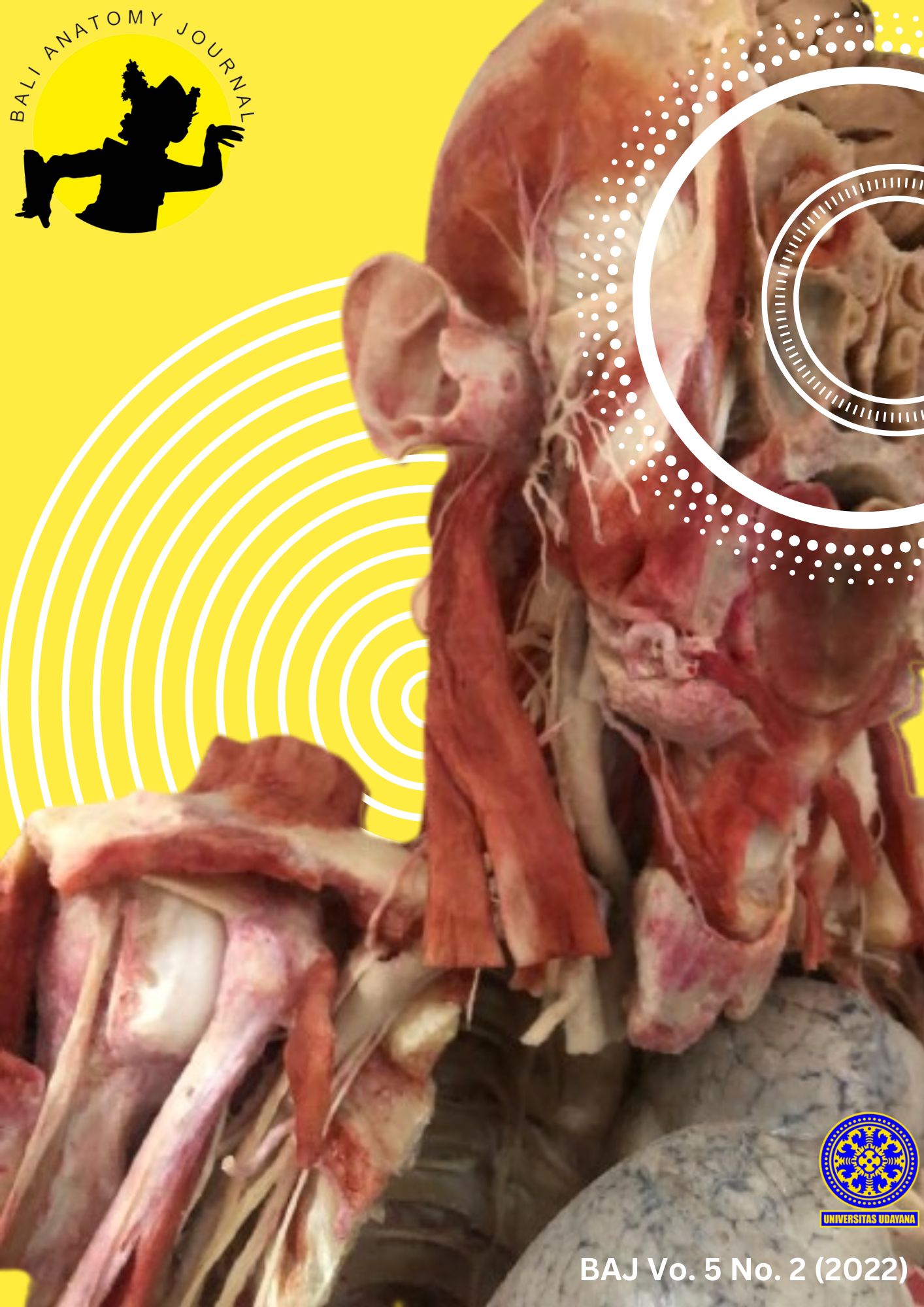Trends in cesarean section rates during Covid-19 pandemic based on Robson classification at Sanjiwani Hospital
DOI:
https://doi.org/10.24843/BAJ.2022.v05.i02.p01Keywords:
Robson Classification, caesarean section rate, RSUD Sanjiwani GianyarAbstract
Background: The Cesarean section rate in 2017 in Bali Province was 32.7%. The Covid-19 pandemic has raised problems in management pregnant women, especially determining mode of delivery.
Aim: This study was conducted to determine the effect of the pandemic on the rate of cesarean section deliveries by comparing the absolute cesarean section rates in 2019 and 2020 using the Robson Classification. This study was a descriptive retrospective. The subjects were all pregnant mother who gave birth at the RSUD Sanjiwani Gianyar in 2019 and 2020. The data were taken from medical records then analyzed using Robson Classification and further analysis of the causes of caesarean section.
Result: From 396 research subjects, the cesarean section rate in 2020 was 52.8%, increased 123.7% compared to the cesarean section rate in 2019 (23.6%). Based on Robson's classification, the highest cesarean section rate was in group 5 with an absolute rate 10.7%, group 1 (8.6%) and group 4 (7.2%). Further analysis showed the largest indications of the cesarean section were maternal conditions (28.3%) and fetal indications (27.9%).
Conclusion: There was a significant increase of cesarean sections rate in 2020 during covid-19 pandemic. The highest indications for cesarean section are maternal conditions and fetal indications.
References
Survei Demografi dan Kesehatan Republik Indonesia. Katalog Dalam Terbitan. Jakarta: Badan Kependudukan dan Keluarga Berencana Nasional; 2018. 148-178 p.
Cunningham FG, Leveno KJ, Bloom SL, Dashe JS, Hoffman BL, Casey BM, Sheffield JS. Williams Obstetrics. 25th Edition. Texas: McGraw-Hill Education; 2018.
World Health Organization. Robson Classification: Implementation Manual. Geneva: World Health Organization; 2017. 9-14 p.
Vogel JP, Betran AP, Vindevoghel N, Souza JP, Torloni MR, Zhang J, Tuncalp O, Mori R, Morisaki N, Ortiz-Panozo E, Hernandez B, Perez-Cuevas R, Quereshi Z, Gulmezoglu AM, Temmerman M. Use of the Robson classification to assess cesarean section trends in 21 countries: a secondary analysis of two WHO multicountry surveys. The Lancet Global Health. 2015 April;10(3):260-70.
Tanaka K, Mahomed K. The Ten-Group Robson Classification: A Single Centre Approach Identifying Strategies to Optimise Caesarean Section Rates. Hindawi. 2017.1-5.
Cai J, Tang M, Gao Y, et al. Cesarean Section or Vaginal Delivery to Prevent Possible Vertical Transmission From a Pregnant Mother Confirmed With COVID-19 to a Neonate: A Systematic Review. Front Med (Lausanne). 2021 Feb;17(8)1-6.
Sarastry R, Layarta C, Aladini U, Pramono BA. Delivery routes in pregnancy with covid-19 and the risk of intrapartum vertical transmission: A meta analysis. Med J Indones. 2021 Jan ;30(2):22-116.
Attalah D, Arab W. Cesarean section rates in the COVID-19 era: False alarms and the safety of the mother and child. Eur J Midwifery. 2021 Jan ;5(14):1-25.
Giaxi P, Maniatelli E, Vivilaki VG. Evaluation of mode of delivery in pregnant women infected with COVID-19. Eur J Midwifery. 2020 March ;4(28): 10-15
Eleje U, Ugwu O, Enebe J, Okoro C, Ocpala B, Ezeroa N. Cesarean section rate and outcomes during and before the first wave of COVID-19 pandemic. SAGE Open Med. 2021 June ;10(20):20-35.

Downloads
Published
Issue
Section
License
Copyright (c) 2023 Bali Anatomy Journal

This work is licensed under a Creative Commons Attribution 4.0 International License.
© 2018 [Bali Anatomy Journal]. All rights reserved. This is an open-access article distributed under the terms of the Creative Commons Attribution 4.0 International License.





